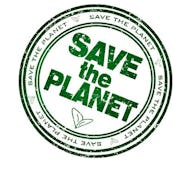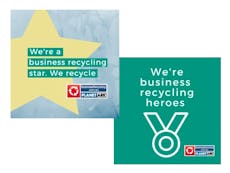How do we get people to engage in the sustainable behaviours we want them to? We’ve done some research and come up with four dos and don’ts when engaging your colleagues or customers in behaviour change. In part one, we explore the two dos and two don’ts.
Some traditional methods around environmental messaging may increase people’s desire to help the environment but not translate to a change in behaviour. Below are two examples of this:
DON’T focus on the kids
The 'legacy hypothesis' (the idea that we want to leave a positive legacy for future generations) does make us care more but doesn't result in behaviour change. The reason for this is parents with children consider themselves time poor and are less open to changing their behaviours than those with no kids.
DON’T save the planet
- Don't focus on the idea that we need to 'save the planet' because:
- 'save' speaks of abstinence and sacrifice
- there is no sense of connection, it isn't specific enough
- there is no attachment to family, friends or you personally
- it could work for a petition but won't change behaviour

DO link to positive desires & aspirations
Studies have found that pride motivates better than guilt. Try linking your message to a sense of belonging (family, friends, community), self-esteem (accomplishment, status) or actualisation (people inherently want to give to or positively transform society).

DO make it personally relevant
Tailoring your communications to link in with your audience’s values can be very effective at changing behaviour. There are many ways you can do this but try the following strategies:
- Trial different versions of your communications to target different personalities: For example, those with high openness (imaginative/unconventional) v low openness (tradition/conservative).
- Focus on different values: For example, '7 home improvement tips ....to save you money and energy this winter'. The environmental benefit is still there but the focus is on 'home improvement' which holds value to more people.
- Tap into what’s top of mind and relevant to your audience: For example, businesses are always trying to find a competitive edge. So using case study champions highlighting how less waste and more recycling provides them with a competitive edge (via a good reputation or greater workplace efficiencies) will be relevant.
More information
Want more ‘Behaviour Change Made Easy tips'? Check out Planet Ark’s series of articles.
Learn more about understanding values to improve recycling by watching the presentation by Planet Ark's Recycling Programs Manager, Ryan Collins, at the Waste 2018 Conference.